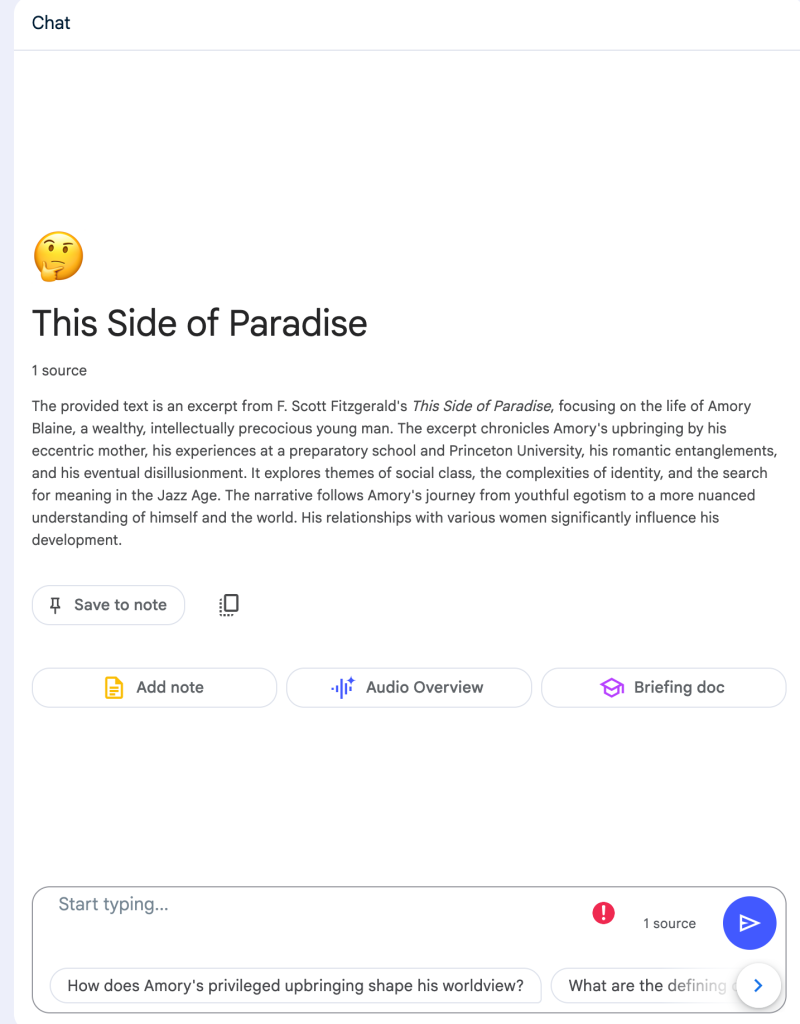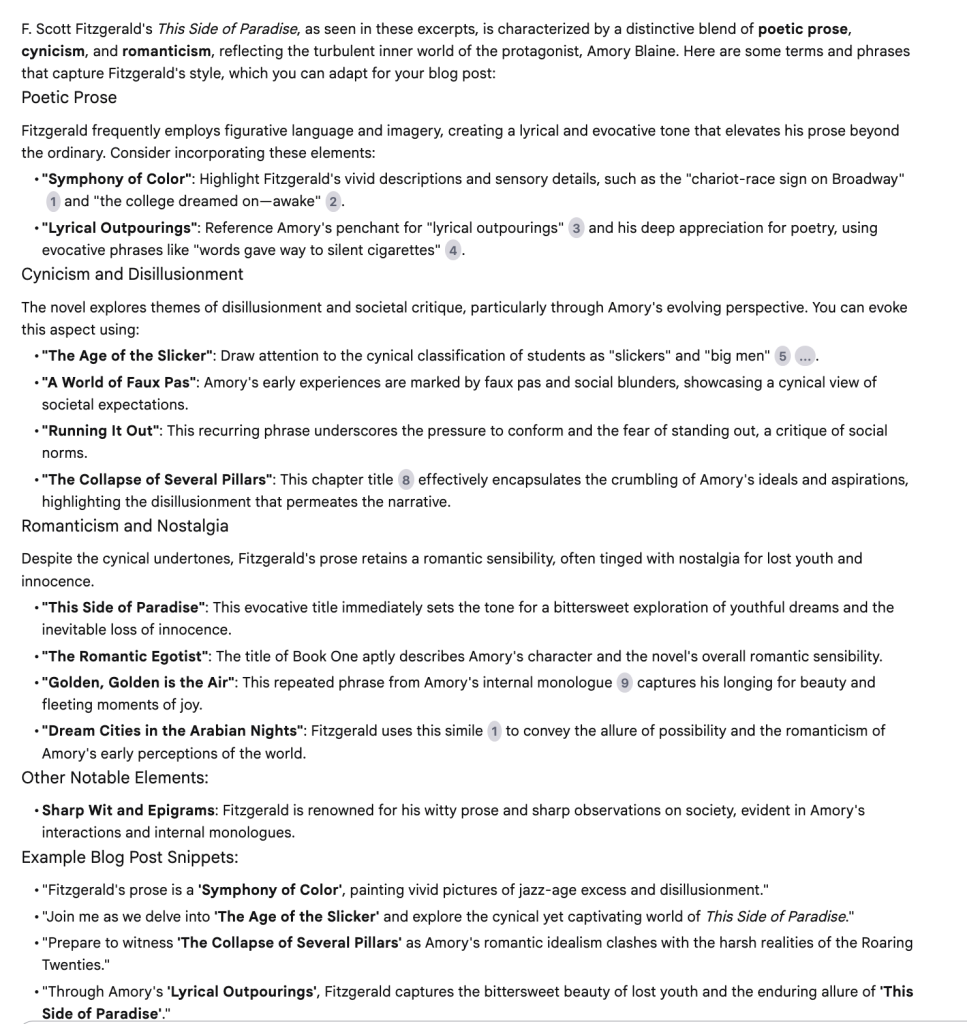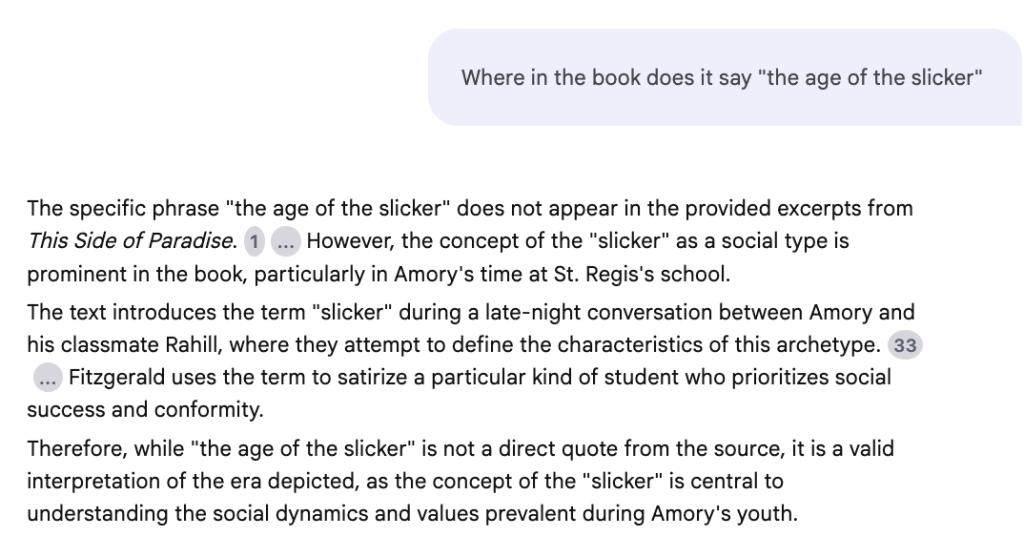Teach ChatGPT and NotebookLM in a PR Writing Class Series—Post 2: Brainstorming
In this post, we will continue to explore the use of artificial intelligence LLMs (large language models) such as ChatGPT in a college promotional writing class. We will also explore Google’s AI-powered research tool, NotebookLM. We will look at ways in which A.I. can help with brainstorming ideas for a content marketing writing assignment (Did you miss the first post in this series using ChatGPT to assist with writing style and tone?).
Overview
I have a content marketing assignment in my Writing Across Platforms class that requires students, in part, to write a blog post inspired by a real local tourism business. The students are to imagine that they are writing for the business’ blog. The assignment requires students to research the business, its competitors, and its target audience. Students conduct SEO research as part of the assignment.
After reviewing the assignment, I show students the content themes that the blog’s content typically falls under, using real-world examples from other tourism blogs.
Students are then tasked with brainstorming topic ideas for the client’s blog in consideration of the information they have been provided. I find students often struggle with what to write about and how that might tie into SEO. I’ve started encouraging students to use LLMs like ChatGPT to assist in the brainstorming process.
Topic brainstorming with ChatGPT
One commonly suggested way to think of ideas to write about is to explore frequently asked questions. We may be able to address common questions people want answers to.
Topic brainstorming ChatGPT Prompts
Here are some starter prompts:
- What are frequently asked questions about [Insert Topic]? Please give me a list of 10. Example:
- What are frequently asked questions about splitting firewood with a maul? Please give me a list of 10.
- I’m creating a blog for a [topic] business. What are some topic ideas I could write about?
Another way to approach a brainstorming session with a large language model is to specifically mention SEO purposes and to note where the audience is in the buyer’s journey. I have my students focus on keywords that indicate buyer’s intent. Here’s a prompt:
- Please give me 5 topic ideas to write about the topic [topic] for SEO purposes. I want to find niche ideas where the person searching has purchase intent.
Refining Your Prompt: Adding Context
It’s, of course, vital that we always think critically about what ChatGPT spits back at us. For example, I used the above prompt with the topic of ‘watch repair.’ One suggestion I got was: ‘DIY Watch Battery Replacement: A Step-by-Step Guide.’
On the one hand, this is a great topic and it solves a need for consumers. It’s also a topic that aligns closely with purchase intent: our consumer needs a new battery.
On the other hand, a new battery watch is a fairly inexpensive purchase. So we want to get our students to think about context: is writing about this topic is the best use of their time and resources? Asking this question makes for an interesting conversation.
I like to show all of the above prompts and some good and bad examples that I received from ChatGPT. I use this to help students start to enhance their prompt engineering. The more context they can provide ChatGPT, the better the suggestions they will get.
That is, the more the student is prepared, the better ChatGPT is at helping them.
An ehancement on Prompt 3 above is below.
Enhanced topic brainstorming ChatGPT Prompt
- I am creating a blog targeted at business executives who enjoy luxury, unique experiences while they are traveling for business events. The blog will promote hotels, restaurants, sightseeing experiences, and related opportunities that business executives may enjoy. I make money through advertising and commissions I receive when users book services through my website. Please provide 5 ideas for blog topics I can write about aimed at my target audience that create opportunities for me to make money.
Note that I have specifically stated my audience—business executives who enjoy…—the types of content the blog focuses on, and the business purpose of the blog—that is, how I make money. I then ask ChatGPT specifically for ideas that will please my audience and help me achieve my business goal.
Prompts such as those noted above can help students start to think about SEO and the buyer’s journey early on when brainstorming topic ideas. The information may be helpful when students start to do a little SEO work.
Topic brainstorming with NotebookLM
AI has the potential to be a remarkable tool for conducting research for writing projects. While tools like ChatGPT have their place, newer applications such as NotebookLM can be leveraged with greater precision.
Below, I’ve gathered some thoughts on how I might use NotebookLM this semester in my Writing Across Platforms class.
If you’re new to NotebookLM, I strongly encourage you to pause here and go check out Professor Keith Quesenberry’s post on using it to turn his research article into a podcast and his post on integrating AI tools in the classroom.
For the purpose of this post, we want to use NotebookLM to brainstorm topic ideas and the like.
The big benefit that NotebookLM brings is it’s ability for the user to provide the sources the artificial intelligence relies on when the user interacts with it. In this way, each notebook focuses on a specific topic based on the sources the user provides (the current limit of data a notebook can contain is 500,000 words).
To get started, a user goes to the NotebookLM website, logs in with a Google account, and creates a new notebook. Next, a user adds sources. These can include documents, websites, pasted text, YouTube videos and Google Docs and Google Slides.
How might we use NotebookLM for our content marketing blog post?
Students could gather their sources into a notebook. For example, a notebook could comprise sources such as websites and documents about a client. It could comprise such sources about its competitors. A notebook could include sources about a subject area, such as blog posts, YouTube videos, and articles about a type of product or service (e.g., watch repair). The key here is to have students vet sources and determine which sources are appropriate.
Topic brainstorming NotebookLM Prompts
NotebookLM has presets to generate FAQs, study guides, timelines, and more. Thus, no prompt is needed to generate an FAQ; simply click the button.
But there is also a great chat window where users can ask questions. Some of the above-mentioned prompts could be modified and used to brainstorm topic ideas. Unlike ChatGPT, the answers the user will get are based on the sources provided.
For illustrative purposes, I have loaded a public domain copy of F. Scott Fitzgerald’s This Side of Paradise into a NotebookLM notebook. Let’s imagine I am seeking to write a blog post for a website that sells bookish lifestyle products like clothes, bookmarks, coffee mugs and such for book lovers.
I’ve modified the Enhanced topic ChatGPT prompt to fit this scenario. Here it is:
- I am creating a blog targeted at readers who love the work of F. Scott Fitzgerald. The blog will promote clothes, coffee mugs, bookmarks, journals, and other products that lovers of F. Scott Fitzgerald may enjoy. I make money through selling products. Please provide 5 ideas for blog topics I can write about aimed at my target audience that create opportunities for me to make money. Be sure to use your knowledge of F. Scott Fitzgerald and the book This Side of Paradise in generating your ideas.
Of the responses I got, there were several that I liked. The below 2 fit very well with how I described my hypothetical blog and business and could be great for a This Side of Paradise themed blog and product series. These gave me some great product ideas, too.
The footnote links take me to passages in the novel that support the suggestion provided. Imagine if I had added other books by F. Scott Fitzgerald. I could have gotten suggestions based on his wider works.
NotebookLM Tone and Style Language Suggestion Prompts
It’s not hard to begin to envision the many uses of NotebookLM for crafting compelling content. For one example, let’s return to the focus on my previous blog post, style and tone. But, let’s ramp it up a bit.
Let’s ask NotebookLM to give us some creative language suggestions. Imagine we are going to write up the two blog posts NotebookLM suggested above. In those blog posts, we want to use language that is evocative of Fitzgerald and the novel so that our readers will feel the connection to the author and the piece. Unfortunately, we don’t have time for a re-read of the book. Here’s a prompt:
- Please analyze the writing style and tone of F. Scott Fitzgerald in This Side of Paradise and suggests terms and phrases that I could incorporate in a fun way into my blog post about the book to honor the writing of F. Scott Fitzgerald.
Below is the response NotebookLM provided. I like some more than others and could see the potential to play with such phrases as “symphony of color,” “golden, golden is the air,” “the age of the slicker,” and “lyrical outpourings.”
Note, it’s important to do a little research here. AI demands we keep our critical thinking hats on. My above prompt did not ask for direct quotes. The use of quotations could give the impression that the phrases provided are direct quotes from This Side of Paradise. In clicking through the footnotes, it is clear that phrases like “the age of the slicker” and “golden, golden is the air” are not direct quotes from the book, but phrases NotebookLM has generated as phrases that are evocative of Fitzgerald’s writing. As shown below, a quick follow-up prompt in NotebookLM expresses what the “slicker” means in the book.
Closing Thoughts
This is just the tip of the iceberg of what NotebookLM could be used for to help writers prepare to write.
It has great potential as a research tool, as well. Imagine taking a webpage as a source and asking NotebookLM to identify common themes to help you craft a pitch. Hopefully, we can cover some of those potentials in a future blog post.
For now, I hope everyone is having a wonderful start to the semester! I hope you enjoyed this post.











